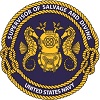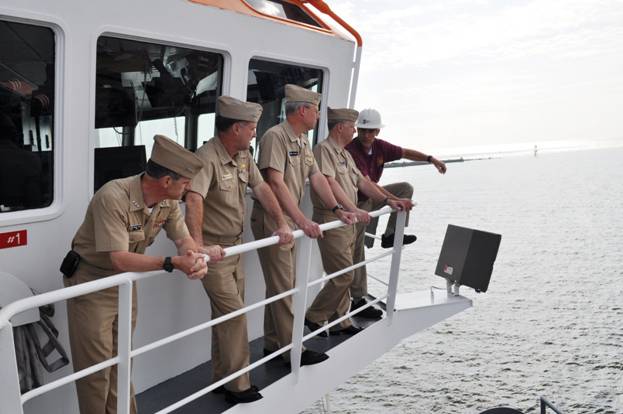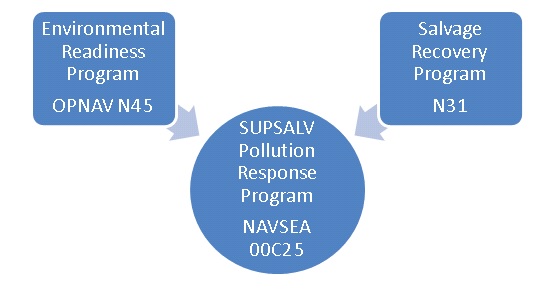
00C25 ENVIRONMENTAL - BACKGROUND
OIL SPILL RESPONSE IN THE U.S. The Federal Regulations 33 CFR 154 and 155 implement the Oil Pollution Act of 1990 by establishing the minimum required oil spill response capacity for vessels and facilities (respectively) and provide requirements for contingency planning. These plans require capabilities in terms of timeliness and capacity for scenarios tailored to the specific facility or vessel. The capabilities for the various Worst Case Discharge (WCD) scenarios are commonly provided by an offsite Oil Spill Response Organization (OSRO). SUPSALV functions as an OSRO for the U.S. Navy and other Department of Defense (DoD) facilities and vessels.
The National Oil and Hazardous Substances Pollution Contingency Plan (40 CFR 300), or more commonly called the National Contingency Plan (NCP), is the federal government's blueprint for responding to both oil spills and hazardous substance releases. The NCP is the result of our country's efforts to develop a national response capability and promote overall coordination among the hierarchy of responders and planners. SUPSALV functions as a Special Team in the NCP (40 CFR 300.145).
One of the major provisions of the NCP establishes the National Response Team and its roles and responsibilities in the National Response system, which includes planning and coordinating responses to major discharges of oil or hazardous waste, coordinating a national program of preparedness and planning, and facilitating research to improve response activities. The Environmental Protection Agency (EPA) serves as the lead agency within the National Response Team (NRT). SUPSALV serves as the DoD representative on the NRT.
Another major provision of the NCP requires notification of any oil discharge or hazardous substance release to the National Response Center through a toll-free telephone number. The National Response Center (NRC) acts as the central clearinghouse for all pollution incident reporting.
U.S. NAVY ENVIRONMENTAL READINESS PROGRAM
The Navy is committed to operating in a manner compatible with the environment and meeting all federal requirements. The purpose of the Chief of Naval Operations (CNO) Environmental Readiness Program is to ensure the ability of United States Navy forces to effectively operate world-wide in an environmentally responsible manner, both ashore and afloat. Prevention is the Navy's first line of defense, with the goal of reducing the number of spills that occur, and along with Preparedness and Response, these are the pillars of the Oil and Hazardous Substance Spill Response Program.
OPNAVINST 5090.1 (series)
The Navy implements Federal, Department of Defense (DoD) and Navy policy through Navy instructions. OPNAVINST 5090.1 (series) is the Navy's Environmental Readiness Program Manual which provides Navy operators and installation managers with policy, guidance, tools and training to support operational readiness in compliance with environmental laws and regulations (OPA 90, 33 CFR 154 &155, etc.).
This instruction requires all Naval afloat and ashore commands to report Oil and Hazardous Substance (OHS) spills in order for the Navy to comply with federal law. It specifically assigns the Naval Sea Systems Command's Office of the Supervisor of Salvage and Diving (SUPSALV) the responsibility to provide an Annual OHS Report to the CNO, to maintain an OHS Spill Tracking System that includes the Navy On-Scene Coordinators' (NOSC) reporting, and to provide technical assistance in developing NOSC response plans. Most importantly, it tasks SUPSALV to maintain a robust worldwide equipment inventory for response to major Navy pollution incidents.
The Navy On-Scene Coordinator (NOSC) is the Navy official pre-designated to coordinate Navy oil and hazardous substance spill contingency planning and to direct Navy spill response efforts in a pre-assigned region or Fleet.

In May 2010, the CNO and his staff toured the SUPSALV Operations Center in the Gulfport, MI in order to get a firsthand look at the U.S. Navy's role during the Deepwater Horizon Oil Spill Response.
SALVAGE AND RECOVERY PROGRAM
The Chief of Naval Operations (CNO) Surface Warfare Program directs the U.S. Navy's Salvage Program which stems from 10 U.S.C.§7361-7364 (Salvage Facilities Act) authorizing the Secretary of the Navy to provide necessary salvage facilities for public and private vessels and settle claims for salvage services rendered by the Navy. This authority allows for the maintenance of a national salvage and oil spill response capability for use in peacetime, war, or national emergency, many of the primary responsibilities of which are assigned directly to SUPSALV.
OPNAVINST 4740.2G
Consistent with the Environmental Readiness Program Manual, OPNAVINST 4740.2G, the Salvage and Recovery Program Manual, also assigns SUPSALV the responsibility to maintain capability for response to OHS releases on the open-ocean incident to salvage operations and in support of Combatant Commanders worldwide.

SUPSALV POLLUTION RESPONSE PROGRAM
As a result of these delegations of responsibility to SUPSALV, the Pollution Response Program exists and is comprised of subject matter experts in the areas of oil spill response and salvage engineering and maintains the capability to respond to pollution incidents anywhere in the world. Their equipment inventory and operational capability is sized using the time and capacity measurement standards of 33CFR 154/155 for a U.S. Navy "Worst Case Discharge" (WCD) scenario. SUPSALV also works with other Federal agencies to develop plans, research the latest spill response technologies, conduct training exercises, and respond to national emergencies and is the DoD representative on the National Response Team.